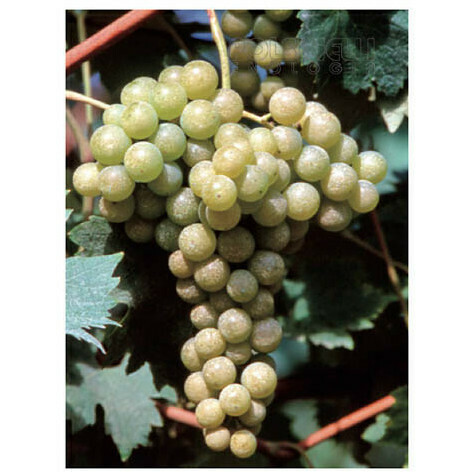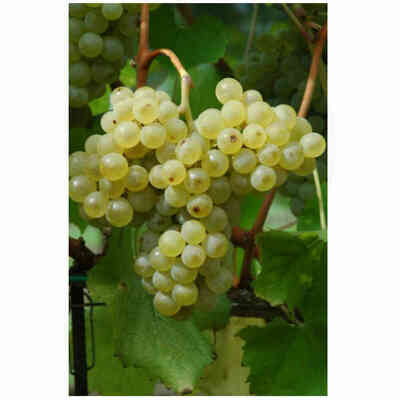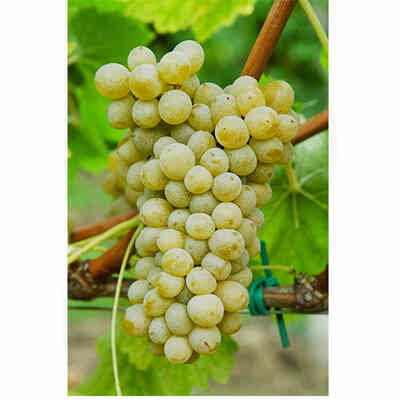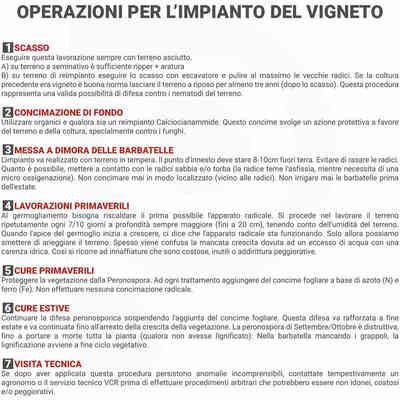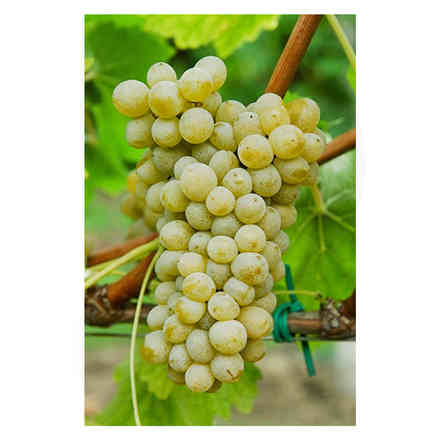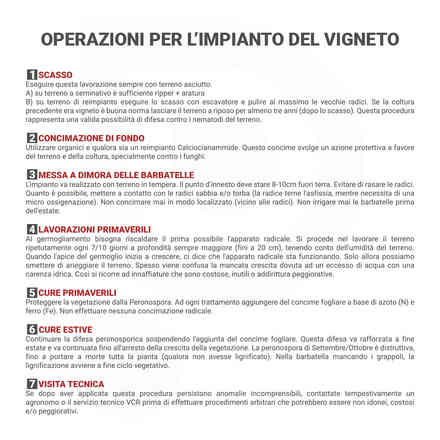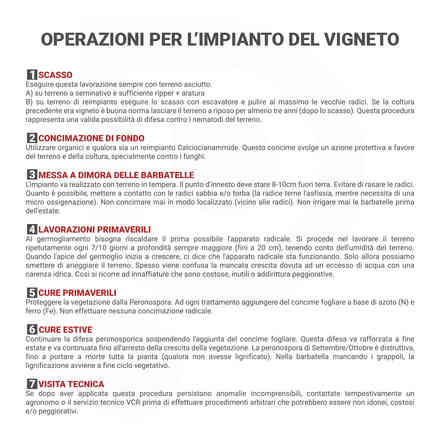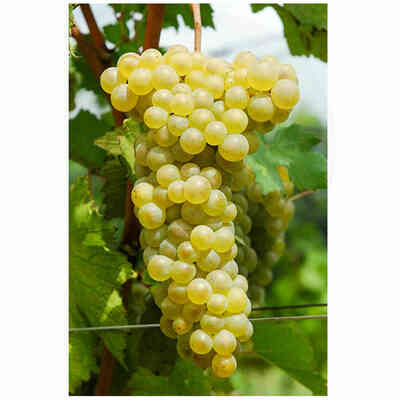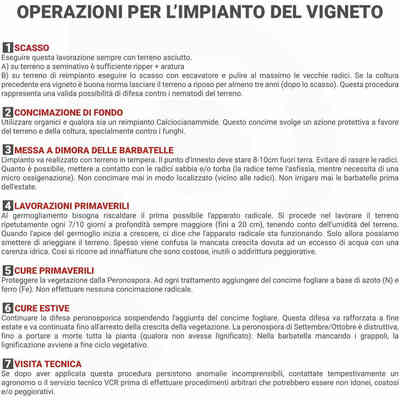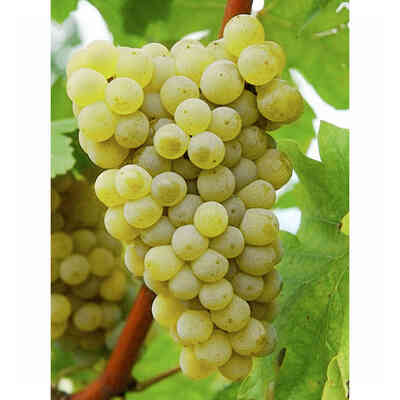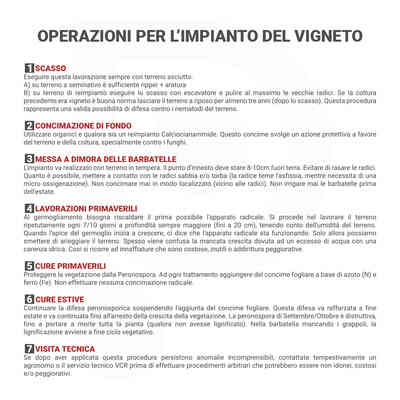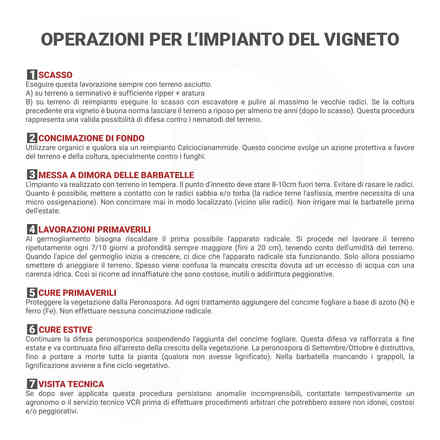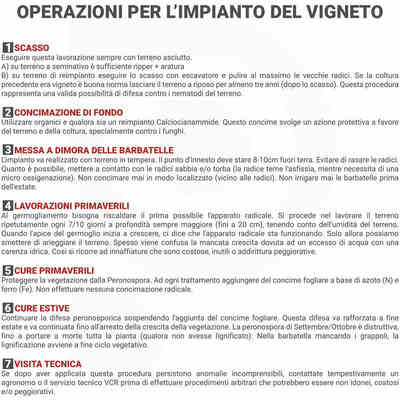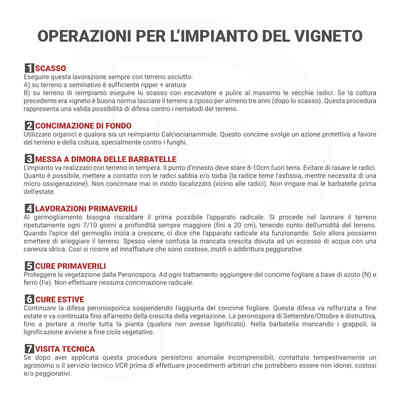Malvasia Candia (100 pieces)
Description
 AUTHORIZED RETAILER
AUTHORIZED RETAILER
MALVASIA CANDIA (100 pieces)
Rootstocks: 1103P - K5BB - S04 - 140RU - 420A (We will send the graft carrier available at the moment)
Of unknown origin, it does not belong to the large Malvasia family but is closer to the Moscati group. Widespread in the hills of Piacenza and Parma, it is also sporadically grown in the Oltrepò Pavese.
- Ampelographic characteristics: the variety is relatively homogeneous, any differences can be seen in the different compactness of the bunch. Sprout with averagely expanded apex, downy, whitish with bronze shades and carmine edges. Leaves are medium-sized, pentagonal, five-lobed, with evident irregular teeth, glossy green blade, glabrous and slightly tomentose even on the underside. Petiolar sinus U-shaped or lyre-shaped. Cluster more than medium, sparse, elongated, very winged, very long peduncle. Berry medium, spheroid with evident umbilicus, opalescent golden yellow; skin thick and pruinose; pulp juicy, loose, muscat flavour.
- Viticultural aptitudes: vine of good vigour with semi-erect vegetation, relatively strong shoot with medium internodes. Prefers relatively fertile and fresh soils in hilly areas and climates that are not too dry.
- Cultivation and pruning: prefers medium-expansion forms of cultivation and long pruning. Difficult to adapt to fully mechanised forms.
- Sprouting time: medium.
- Ripening time: medium.
- Production: average and fairly constant.
- Sensitivity to disease and adversity: subject to more or less evident coulure in the various biotypes. Good resistance to winter cold and late frosts.
- Oenological potential: gives a light golden yellow wine, with a pleasant muscat aroma, sweetish; on the hills of Piacenza it is often vinified mixed with other grapes to give fragrance and aroma to local wines. It has also given wines that are highly appreciated in other environments, confirming the remarkable adaptability of the vine.
Clones in multiplication: Malvasia di Candia Aromatica VCR27, PCMACA62, PCMACA68.
CULTIVATED AREA IN ITALY
YEAR 1970 1982 1990 2000 2010
HECTARES n.a. n.a. n.a. 1,755 827
RULES TO PLANT A VINEYARD
1. PLOW
You must perform this operation always with dry soil
A) On arable land is generally sufficient to ripper + to plow
B) On planting soil is generally sufficient to plow with an escavator and to clean the old roots.
If the previous crop was a vineyard, it is a good idea to leave the soil fallow for at least three years (after plowing). This procedure represents a valid possibility of defence against soil nematodes.
2. SOIL FERTILIZATION
Use organics and if it is a reimplantation, use Calciumocyanamide.
This fertiliser has a protective effect on the soil and the crop, especially against fungi.
3.PROPAGATING GRAPE VINE CUTTINGS
The planting should be carried out in temperate soil. The grafting point should be 8-10 cm above ground. Avoid shaving the redices. As much as possible, put sand and/or peat in contact with the roots (the root fears asphyxiation, while it needs a micro-oxygenation). Never fertilize in a localized manner (near the roots). Never water the rooted cuttings before summer.
4.SPRING WORKS
When sprouting, the root apparatus must be heated as soon as possible. Work the soil repeatedly every 7/10 days at increasing depth (up to 20 cm), taking into account the moisture of the soil. When the apex of the bud starts to grow, it means that the root system is functioning. Only then can we stop watering the soil. Failure to grow due to access to water is often confused with a lack of water. This is why watering is used which is expensive, useless or even worse.
5.SPRING CURE
Protect vegetation from Peronospora. To each treatment add nitrogen (N) and iron (Fe) foliar fertilizer. Do not make any radical fertilization.
6.SUMMER CURE
Continue with the defense against Peronospora by suspending the addition of the foliar fertilizer. This defense should be reinforced in late summer and should be continued until vegetation growth stops.
The September/October blight is destructive, to the point of bringing death to the whole plant (if it has not lignified). The rooted vine lacks clusters, so lignification occurs at the end of the vegetative cycle.
7.TECHNICAL VISIT
If incomprehensible anomalies persist after this procedure, contact an agronomist or the VCR Technical Service promptly before carrying out arbitrary procedures which may be unsuitable, expensive and/or worsening.














